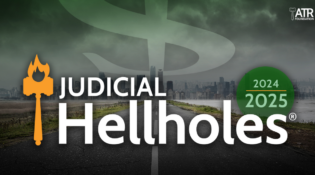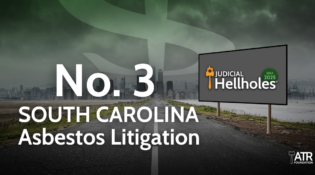Courts Increasingly Skeptical of Speculative Asbestos Claims
As the pool of potential claimants who’ve truly been sickened by exposure to asbestos dwindles, along and as the pool of still solvent defendant companies also dwindles, personal injury lawyers have filed increasingly speculative lawsuits. But many judges, to their credit, are holding the line against such claims. Here are three recent examples:
In a June 3 decision and order on pre-trial motions from Chief Judge William C. Griesbach of the U.S. District Court for the Eastern District of Wisconsin, the plaintiff’s desire to pursue the “any exposure” theory of asbestos liability was firmly rejected. A growing number of state and federal courts have similarly rejected this roundly debunked junk science which alleges that inhalation of a single asbestos fiber or particle of asbestos dust is enough to cause mesothelioma or other diseases allegedly linked to asbestos.
Courthouse News Service reported that the plaintiff in this Wisconsin case has sued dozens of corporations over the years in connection with her husband’s death from mesothelioma after decades of work in the aviation industry. Judge Griesbach will allow her case to proceed to trial, but her expert witness will not be allowed to make an “any exposure” argument.
A rare win for an asbestos defendant in New York City came on June 9 when a state appellate court reversed a lower court in granting a motion for summary judgment. Not surprisingly, the original denial of the perfectly sound and persuasive defense motion occurred in the nation’s #1 Judicial Hellhole, the plaintiff-friendly New York City Asbestos Litigation court known as NYCAL.
As reported by Goldberg Segalla’s Asbestos Tracker, the plaintiff had claimed that “his development of peritoneal mesothelioma was a result of his exposure to asbestos
in the 1980s” when he worked to dismantle and salvage “scrap metal from steam systems in vacant buildings.” He argued that asbestos containing valves he dismantled were “defective” and that the defendant manufacturer had failed to adequately warn of the exposure risks.
But the appellate court cited rulings from other jurisdictions in holding that, in order “[t]o recover for injuries caused by a defective product, the defect must have been a substantial factor in causing the injury, and ‘the product must have been used for the purpose and in the manner normally intended or in a manner reasonably foreseeable’ (Hartnett v Chanel, Inc., 97 AD3d 416, 419 [1st Dept 2012], lv denied 19 NY3d 814 [2012][citation omitted]). As the plaintiff did not use Powell’s manufactured product in a reasonably foreseeable manner and his salvage work was not an intended use of the product, the complaint should have been dismissed.”
Finally, in a June 12 decision by a Maryland federal court, the asbestos defendants’ motion for summary judgment was granted on two grounds. The plaintiff, a former auto mechanic who alleged to have developed asbestosis as a result of exposure to certain brake linings, could not show that the brakes he encountered actually contained asbestos or whether they were even manufactured and sold by the defendants.
No one opposes just compensation for those who have suffered asbestos-related illnesses. But plaintiff lawyers’ efforts to create new liability theories and to otherwise paly fast and loose with the facts must be firmly resisted by the courts.






